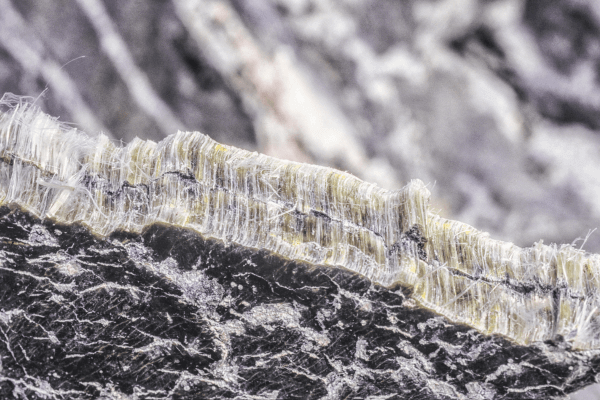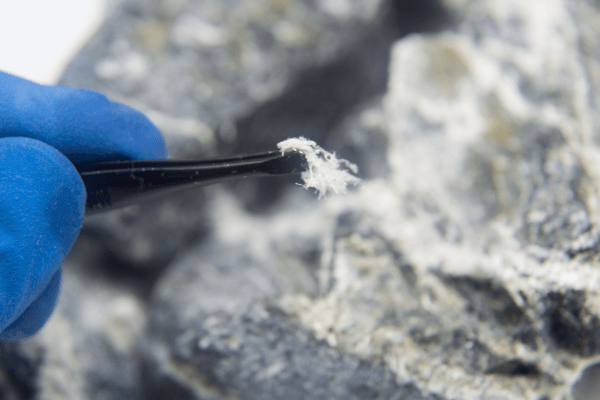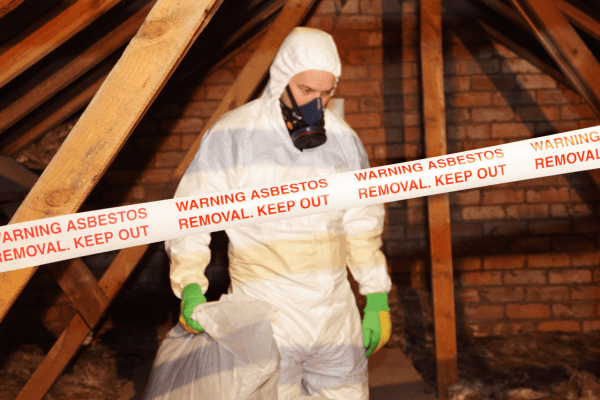Before 1990, Asbestos had long been used in various building materials for homes across Alberta due to its excellent heat resistance, cold weather insulation properties, and noise-dampening abilities. However, many homeowners are still unaware of the hidden danger that it poses to their health and why, if you suspect that you might have it in your home, it is important to remove it. In this comprehensive article, we will delve into the world of asbestos insulation, its history, and the risks associated with its presence in homes.
Understanding the Dangers
Did you know that Asbestos is a mineral that occurs naturally and is composed of microscopic fibers? When inhaled, these fibers can become lodged in the lungs, leading to serious health problems. Prolonged exposure to Asbestos has been linked to lung cancer, mesothelioma, and other respiratory diseases. This insulation is particularly dangerous because it can deteriorate over time, releasing these hazardous fibers into the air.
The History of Asbestos Insulation Use in Alberta Homes
The use of asbestos insulation in Alberta homes dates back to the early 20th century. This material was widely regarded as a miracle at that time due to its fire-resistant properties. It was commonly used for pipes, boilers, and electrical wiring insulation. However, only during the latter half of the century did the health risks associated with AMC become widely known. As a result, the use of Asbestos in construction materials was gradually phased out.
What Building Materials Are Known to Contain Asbestos
Knowing what materials in your home might contain Asbestos is the first step in helping ensure that your home is safe for not only yourself but also your family. If you are currently living in a house that was built before 1990, it would be wise to test the following items:
- House Siding
- Cement and Plaster
- Flood and ceiling tiles
- Roofing products such as tar paper, shingles, and felt.
- A variety of surface treatments, such as paint, putty, drywall, caulking, sealants, and spackling.
- Industrial furnaces and heating systems
- Insulation, including around hot water pipes and tanks.
How to Identify Asbestos Insulation in Your Home
Despite knowing what materials are likely to contain Asbestos, identifying it in your home’s insulation can be extremely challenging, as we often find it mixed with other materials like plastics. Despite this, some telltale signs can be used to visually identify and determine if your home likely contains AMC insulation.
The first thing to consider is whether your home was constructed before the 1990s, as, unfortunately, there is a higher likelihood of it being present. Homeowners should be on the lookout for any insulation materials that appear gray or white with a fibrous texture. In Red Deer, the three main types of insulation we see are Loose-Fill Insulation, Vermiculite Insulation, and Zonolite Insulation.
- Loose-fill insulation can be identified by its loose, lumpy form and fluffy consistency. This product was designed to be poured onto an attic’s floors or blown into hollow spaces inside the walls of homes and other building structures.
- Vermiculite insulation is one of the most common household materials and insulation used to contain Asbestos. This type of insulation looks like tiny pebbles and typically is a grayish-brown or silvery-gold color.
- Zonolite Insulation is a trademarked brand name for vermiculite and was designed to be poured onto the floors of attics. Like vermiculite, this insulation appears to have a silver-gold or light brown-gray color.
The Importance of Testing and Inspection
If you are worried that your home might contain asbestos insulation, it is important to conduct testing and inspection to accurately determine its presence. This process involves collecting samples of the suspected materials and sending them to a certified laboratory for analysis. Testing helps provide you with peace of mind and can help you make informed decisions on the next steps to take to ensure the safety of your home and your family.
To accurately determine the presence of asbestos insulation in your home, it is crucial to conduct testing and inspection. This involves collecting samples of suspected materials and sending them to a certified laboratory for analysis. Testing can provide you with peace of mind and help you make informed decisions about the next steps to take to ensure the safety of your home and family.
The Process of Asbestos Testing and Inspection
Visual Inspection
First, a certified abatement specialist will come and do a thorough visual inspection and assessment of the areas in your home that are suspected to have ACMs so that the material can be tested. The specialist will identify and document areas with contaminated insulation during this inspection.
Sampling
After a thorough visual inspection, samples of the suspected areas are taken, and a certified specialist will take several samples. Warriors regulations stipulate a specific number of samples to be taken for each type of material, carefully sealed and stored before transfer to the laboratory.
Analysis
Once your samples are carefully collected they are then sent to a certified and accredited laboratory for analysis.
ACM Survey Report
Once the laboratory results are obtained, the homeowner will receive a detailed report outlining the presence and extent of this substance in your home. You can anticipate this report to contain the following information:
- the surveyor’s name
- a summary of the survey
- details about the site
- Survey data, scope, methodology, & Main findings
- Information on the laboratory performing the sample analysis
- Overall Recommendations and Conclusions
- Any limitations of the survey
- Other relevant data
- Any limitations of the survey
- Other relevant data
Health Risks of Exposure
Exposure to asbestos fibers can have severe consequences for your health. Asbestos-related diseases often take years or even decades to develop, making early detection and prevention crucial. Lung cancer, mesothelioma, laryngeal cancer, ovarian cancer, stomach cancer, colorectal, and many more are among the most common health risks associated with asbestos exposure. It is important to be aware of these risks and take necessary precautions to minimize the chances of exposure. If you are worried your house might contain this carcinogen, contact a specialist immediately.
Removal and Remediation
If asbestos insulation is found in your home, it is essential to take appropriate and quick measures to deal with it. Removal and remediation should only be undertaken by trained professionals to ensure safety and compliance with regulations. The process of removing an ACM involves:
- Sealing off the affected area.
- Removing the asbestos-containing materials.
- Proper disposal.
It is important to follow proper procedures to minimize the release of fibers during the removal process.
Hiring a Professional Removal Service
Given the potential risks associated with removing this insulation, it is highly recommended to hire a professional removal service. These experts have the knowledge, experience, and equipment to safely handle and completely remove contaminated insulation from your home. When selecting a professional removal service, it is crucial to choose a reputable company with proper certification and a track record of successful projects. RAWK J Services is a trusted name in asbestos removal in Alberta, providing reliable and efficient solutions.
Conclusion
ACM insulation in Alberta homes presents a hidden danger to homeowners and their families. Understanding the risks associated with exposure and taking proactive measures to identify and address its presence is crucial for maintaining a safe living environment. Through proper testing, inspection, and, if necessary, removal, homeowners can ensure the long-term health and well-being of their loved ones. Don’t wait until it’s too late – prioritize the safety of your home by taking action against asbestos insulation today.



